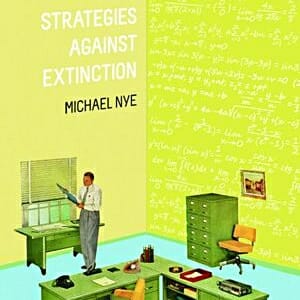Strategies Against Extinction by Michael Nye
The trouble with reality

The most socially prevalent stories of the past several years are far from pragmatic. We find ourselves bewitched by wizardry and the living dead-vampires and zombies. We face immersion in dystopian societies where lives are wagered for sport and entertainment. In short, we seem spellbound by every world except our own.
Realists have their work cut out for them. With our culture’s predisposition for the sensational, realists face the challenge of finding a balance between entertainment and authenticity. Realist writers must pave a path allowing the reader a retreat from his own life without overburdening him with a fictional life too similar to his own.
Kyle Minor’s In the Devil’s Territory (Dzanc Books, 2008) gives a strong example. Minor expertly walks us down the sandpapery grit of life. In one story, a tortured old woman with dementia struggles against the demons of her youth. In another, a religious man bridles his homosexuality. Elsewhere, a woman escapes from communism by swimming across the Rhine with her family.
There’s no mistaking that Minor means In the Devil’s Territory as a realist text. Even so, the stories hold elements of the fantastic that sometimes create a barrier between the characters and their reader. How many of us will in fact risk our lives swimming a river to escape a communist regime? How many of us will actually spend decades in a fruitless marriage to resist homosexual urges? It’s not that these things don’t happen in the real world. They do…only not to most of us.
So then we get to Michael Nye’s Strategies Against Extinction, a book with a perfect epigraph. It’s an excerpt from a short story by Joyce Carol Oates (and also where the book gets its title.) Oates’ excerpt states her case: Any semblance of design or order to the world happens to be nothing more than a mirage, and as humans we face one hapless fate-to organize chaos.
The stories of Strategies Against Extinction do just that. The protagonists of Nye’s tales arrive disillusioned, bored, alienated. In short, they’re like most of us: living.
We recognize these plots: A man loses track of his daughter at the museum. A girl passes her final summer of college in her hometown with her mother. A man struggles with the distance between his sons as he faces his own mortality.
The first story of the collection, “The Re-Creationist,” removes the softened Kodachrome glow from a 1950s family portrait. Don works as the local baseball radio pundit for the Pirates … but his job is at risk. His estranged wife threatens divorce. His son grows up without him. In the crow’s nest of the booth, he turns to fantasy, at first by just exaggerating plays, then later fabricating incidents altogether. Don fancies himself a showman and finds safe harbor in illusions he creates.
-

-

-

-

-

-

-

-

-

-

-

-

-

-

-

-

-

-

-

-

-

-

-

-

-

-

-

-

-

-

-

-

-

-

-

-

-

-

-

-








































